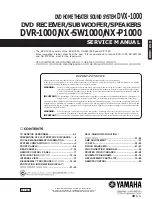
User’s Guide HDSP System Digiface
© RME
24
15. Notes on using Laptops and CardBus
The HDSP system uses the notebook’s PCMCIA type II port as
CardBus
interface. Compared
to a PC-Card, which only has access to the outdated ISA-bus, CardBus is a 32 bit PCI
interface. When inserting the CardBus card it usually is detected automatically by the notebook
hardware and then by the MacOS. An icon labeled 'Hammerfall DSP' will appear on the
desktop.
Like with a desktop computer it is not possible to remove a PCI device while in operation. First
the operating system has to receive a 'removal request’, then the device has to be stopped.
This procedure prooves to be very simple on the MacOS: just drag the
'Hammerfall DSP' icon in the trash can. The MacOS internally de-installs
the CardBus card and switches off power (the red Host LED begins to
blink). The card can now be pulled out of the PCMCIA slot.
The Hammerfall DSP System was tested thoroughly on several notebooks by RME. We did not
find any compatibility problems with older G3 Powerbooks or the latest Titanium. The
performance was good and allowed to use latencies down to 1.5 ms.
The mobile operation of the HDSP system can cause problems. Explanations and solutions on
digital noise, ground loops, headphone operation and Line Out wiring, power supplies and the
mobile operation with battery can be found in the Tech Info
HDSP System: Notebook Basics -
The Audio Notebook in Practise
.
The hardware of a notebook differs in many points from that of a desktop computer –
sometimes…Detailed information on all components, from CPU to the display, can be found in
the Tech Info
HDSP System: Notebook Basics – Notebook Hardware
. Although this Tech Info
speaks about IBM-compatible machines it is still interesting even for the MacOS user.










































